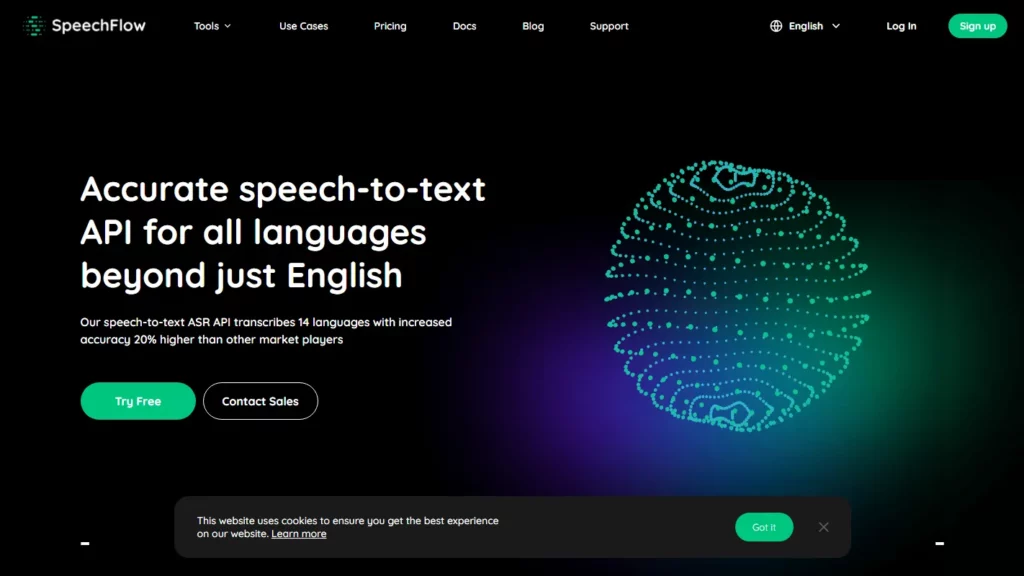Speechflow by Microsoft offers a range of speech-related services under the umbrella of Azure AI Speech. These services include speech recognition, text to speech, speech translation, voice-enabled app features, and more. Users can quickly develop high-quality voice-enabled apps with the Speech SDK, which allows them to transcribe speech to text, produce natural-sounding text-to-speech voices, translate spoken audio, and use speaker recognition during conversations. The platform also supports customizable voices and models, flexible deployment options, and comprehensive security and compliance measures. Additionally, Speech Studio is a set of UI-based tools for building and integrating features from Azure AI Speech service in your applications, allowing users to create projects with a no-code approach and reference assets using the Speech SDK, the Speech CLI, or the REST APIs.
⚡Top 5 Speech Studio Features:
- Real-time speech to text: Quickly test speech to text by dragging audio files here without having to use any code.
- Batch speech to text: Quickly test batch transcription capabilities to transcribe a large amount of audio in storage and receive results
- Custom speech: Create speech recognition models that are tailored to specific vocabulary sets and styles of speaking
- Pronunciation assessment: Evaluate speech pronunciation and give speakers feedback on the accuracy and fluency of spoken audio
- Speech Translation: Quickly test and translate speech into other languages of your choice with low latency
⚡Top 5 Speech Studio Use Cases:
- Captioning: Choose a sample video clip to see real-time or offline processed captioning results
- Call Center: View a demonstration on how to use the Language and Speech services to analyze call center conversations
- Audio Content Creation: A no-code approach for text to speech synthesis
- Custom Keyword: A custom keyword is a word or short phrase that you can use to voice-activate a product
- Custom Commands: Easily build rich, voice-command apps that are optimized for voice-first interaction experiences















